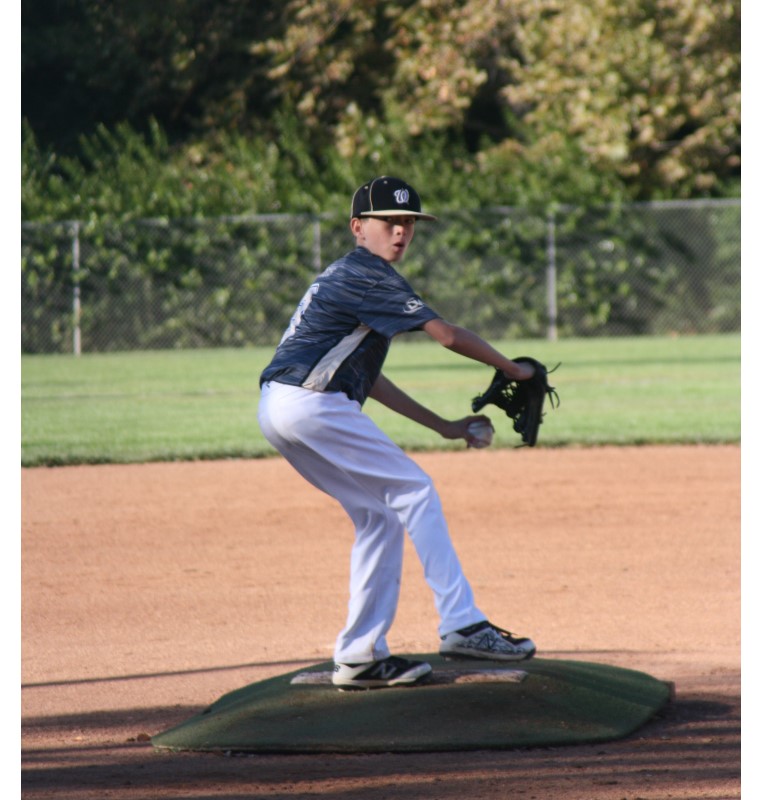
John R. Mishock, PT, DPT, DC
With the baseball season is in full swing, the Major League Baseball injury rate is reaching an unprecedented level. The throwing injury rate is also increasing in college, high school, and youth level baseball players.
Most coaches look at pitch count guidelines to help reduce throwing overuse injuries. Limiting the number of pitches thrown has reduced throwing injuries by as much as 50% (Little League, 2011, 2013). However, pitch limits are not the whole story and are often misleading. Each athlete is different in their injury history, strength, endurance, exercise training history, body makeup, and pitching mechanics. These differences must be taken into consideration when coaching pitchers. For example, the pitcher who has poor throwing mechanics and reduced physical strength and endurance are at greater risk for injury with fewer pitches than the athlete who has good pitch mechanics and optimal power of the musculature critical for throwing. So… 25 pitches in an outing could be taxing and put a young athlete at risk even though it is well below most league pitch count guidelines. Because of this ambiguity, pitch counts need to be used in complement with signs of arm and body fatigue.
Recent research has shown that the number one risk factor for throwing-related injuries is pitching through arm and body fatigue. A pitcher is an astounding, 36 times more likely to sustain a shoulder or elbow injury when pitching through fatigue (American Sports Medicine Institute, 2014). Fatigue undeniably the number one risk factor for injury in most sports, such as basketball, soccer, football, and others. Unfortunately, most athletes, parents, and coaches have not been trained on the warning signs of arm and body fatigue.
First of all, if a pitcher complains of being fatigued or looks tired, they must stop throwing immediately and rest. Many pitchers will resist being taken out of a game making it important to be able to recognize key pitch mechanic changes that are signs of fatigue.
Pitch mechanic warning signs of arm fatigue:
- Upright trunk at ball release “standing tall”. As the legs and core (abdominals and hips) musculature begin to tire, there is decreased knee flexion (knee bending) of the landing leg and/or decreased flexion (bending) of the torso or trunk. This pattern causes less external rotation (backward rotation of the throwing arm) and a high release point leading to an elevated fastball.
- Change in arm slot or angle. As the pitcher’s shoulder begins to fatigue there is less external rotation of the shoulder causing the elbow to drop changing the arm slot. The change in arm slot puts more strain on the rotator cuff muscles of the shoulder.
- The pitcher relies less on the lower body and more on the arm. The pitcher begins to look like he is throwing “all arm”.
- There is a drop-in pitch velocity. The drop-in pitch velocity is a sure sign of fatigue. A consistent 3-5 mph change in average velocity is a good time to make the pitching change.
- The pitcher takes more time between pitches. When fatigued the pitcher often increases his time between pitches, walking around the mound, or slowing his delivery.
The complete signs of fatigue and much more can be found in my book, “The Rubber Arm: Using science to increase pitch control, improve velocity and prevent elbow and shoulder injuries.” This book can be obtained at train2playsports.com or Amazon.
Learning to observe these subtle changes in pitch mechanics may help the parent or coach make the critical decision to remove a fatigued pitcher, potentially reducing the incidence of elbow and shoulder injuries.
We can help!
If pain is limiting you from doing the activities you enjoy, give Mishock Physical Therapy a call for a Free Phone Consultation at (610)327-2600
Email your questions to mishockpt@comcast.net
Check out www.mishockpt.com to REQUEST an APPOINTMENT, learn more about our treatment philosophy and meet our physical therapy staff,
Visit https://mishockpt.com/blog/ to read more sports performance and physical therapy-related articles.
Locations: Gilbertsville, Skippack, Boyertown, Phoenixville, Steiner Medical, Pottstown, and Limerick (inside the Spring Valley YMCA).
Appointments available 7 am to 8 pm ALL locations, most days.
Saturday appointments available.
Our mission is to exceed the expectations of our patients by providing excellence in care and service. We are here to serve you!
